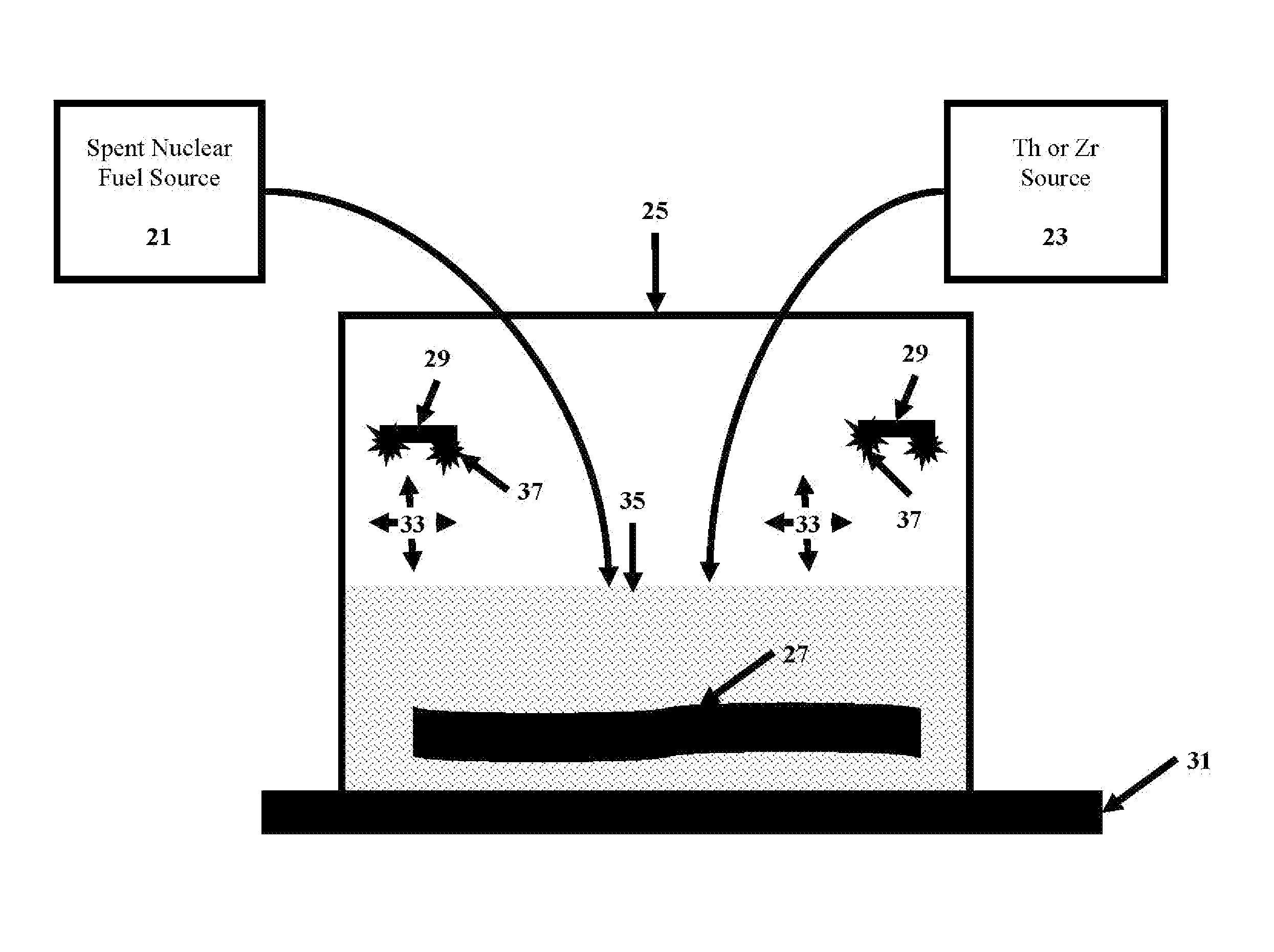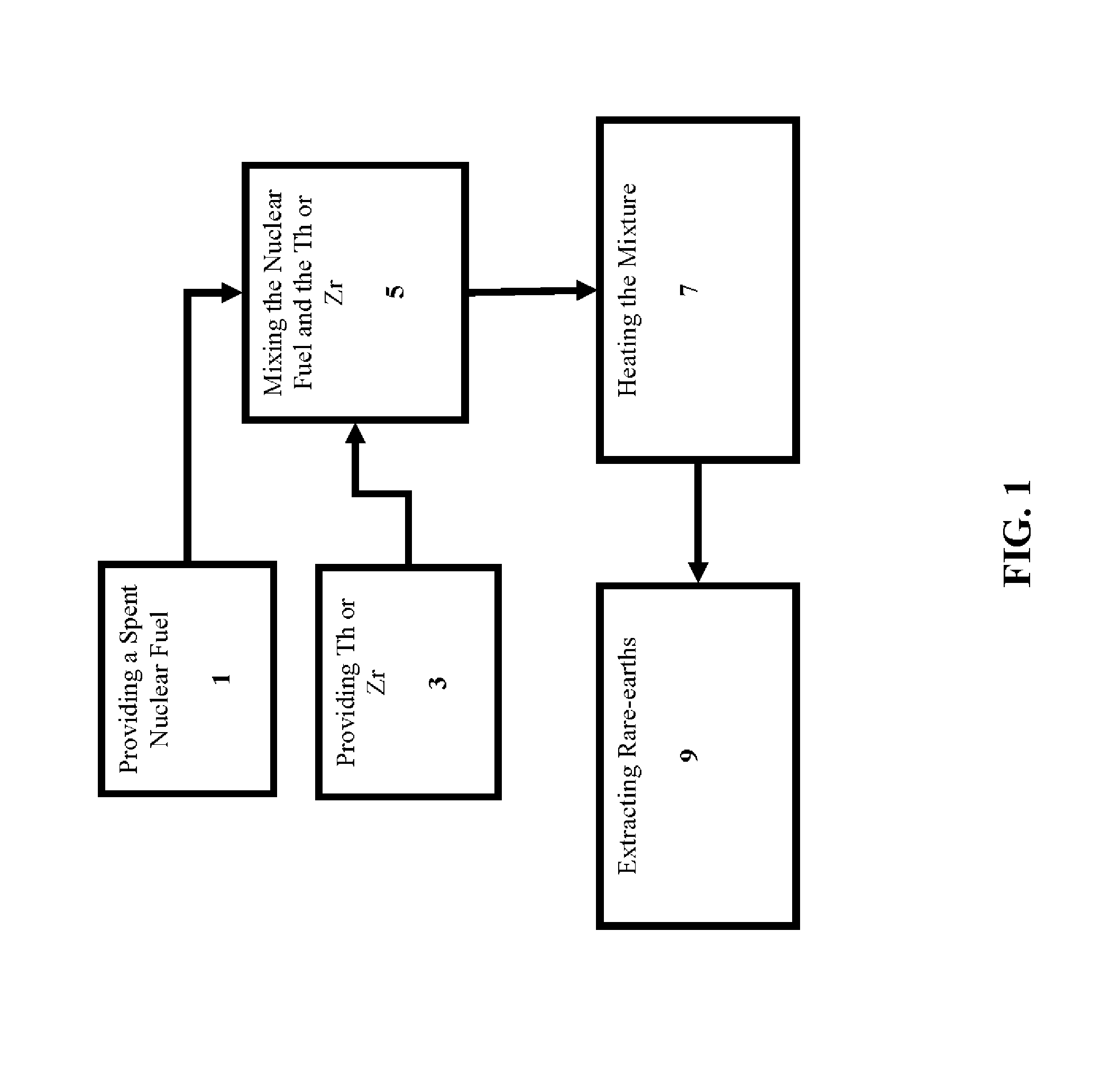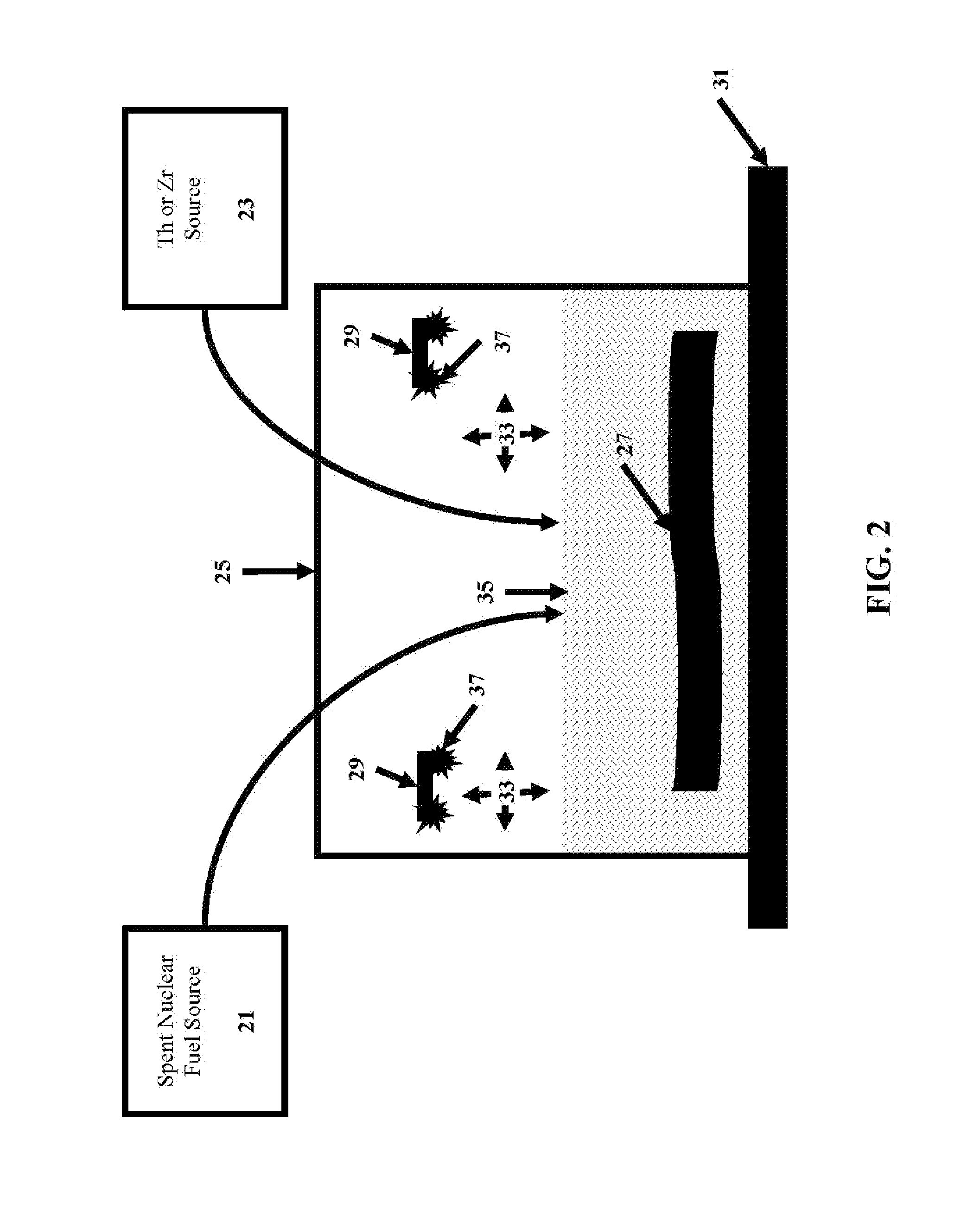Separation of the rare-earth fission product poisons from spent nuclear fuel
- Summary
- Abstract
- Description
- Claims
- Application Information
AI Technical Summary
Benefits of technology
Problems solved by technology
Method used
Image
Examples
example
[0047]In one exemplary embodiment, a 500 ton / yr processing plant is constructed to utilize four cylindrical furnaces of 2 ft diameter by 5 ft length are used to process nuclear fuel. Each cylindrical furnace preferably contains 114 kg BOL U (beginning-of-life initial uranium mass) of spent nuclear fuel; spent nuclear fuel from a pressurized light water reactor with 33 GWD / MTU (33 Gigawatt-days / metric tonne of initial uranium metal) exposure and cooled for 20 years. Operating 90% on-line for 292 days per year (80% operating days per year), each furnace preferably has a turnaround time of 5.75 hours. Therefore, if 4.0 hours is allowed for processing time and 1.75 hours for change out, the throughput rate is preferably achieved. At 1,000° C., the vapor pressures of Sm and Eu are 0.0027 and 0.017 atm, respectively. If a sweep gas rate of 210 standard liter / min (28-second residence time in furnace) is used and becomes saturated with rare-earth metal vapors, the mass transport rates of Sm...
PUM
 Login to View More
Login to View More Abstract
Description
Claims
Application Information
 Login to View More
Login to View More - R&D
- Intellectual Property
- Life Sciences
- Materials
- Tech Scout
- Unparalleled Data Quality
- Higher Quality Content
- 60% Fewer Hallucinations
Browse by: Latest US Patents, China's latest patents, Technical Efficacy Thesaurus, Application Domain, Technology Topic, Popular Technical Reports.
© 2025 PatSnap. All rights reserved.Legal|Privacy policy|Modern Slavery Act Transparency Statement|Sitemap|About US| Contact US: help@patsnap.com



